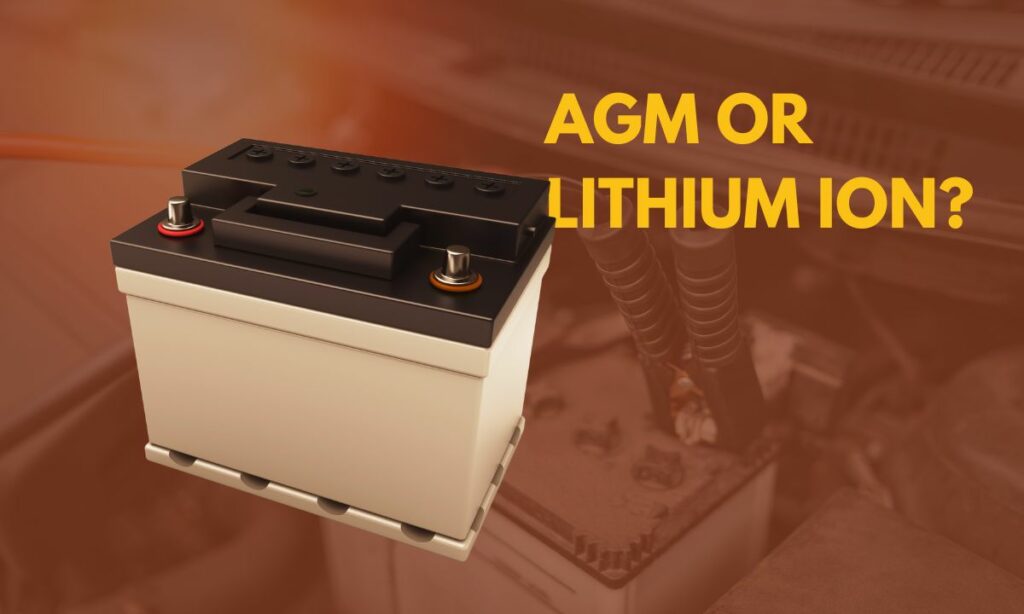Lead-acid, AGM, gel, and lithium-ion batteries are the main battery types used in automotive applications.
Alkaline batteries are not used much in automobiles since they are non-rechargeable.
We are going to discuss each of these four battery types in detail.
If you want to see the differences directly, you can jump to the comparison table here.
For an in-depth view of each of these batteries, let’s dig in.
#1. Lead acid battery
The lead acid battery is the first rechargeable battery ever used in automotive applications.

The battery is called a lead-acid battery because of its construction.
Inside the battery are lead plates submerged in an acid (diluted sulphuric acid) used as the electrolyte.
The battery also contains plates made of lead oxide wherein the chemical reaction takes place.
The acid usually used is sulphuric acid (H2SO4). Diluted with water with a water-to-acid ratio of 3:1.
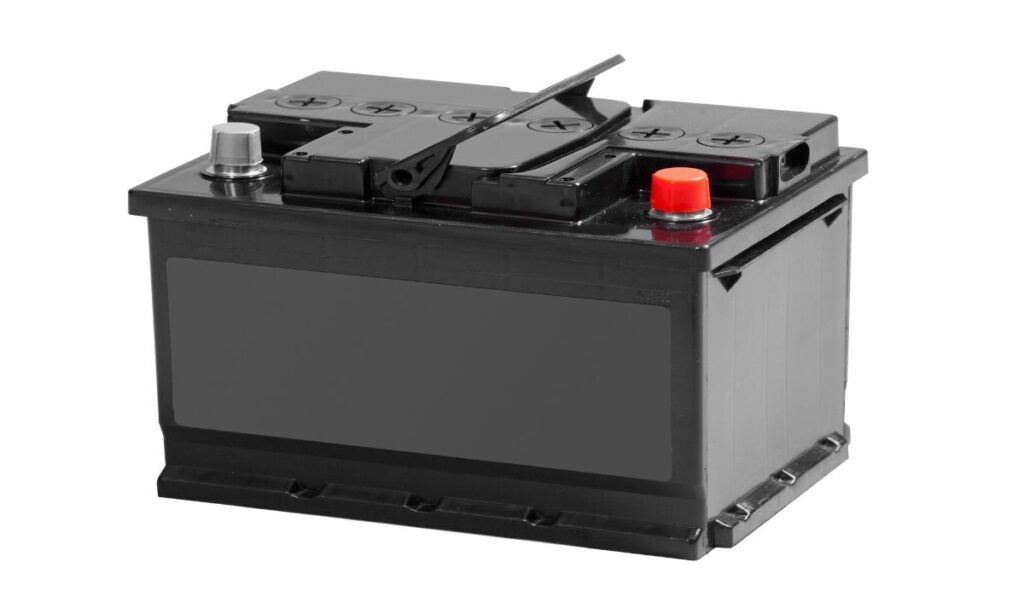
This setup leads to a chemical reaction releasing energy. the energy released is what provides us with the current.
Put simply, the battery has chemical energy in it which is used to convert it into electrical energy.
As mentioned earlier, the lead acid battery is rechargeable.
When supplied with electricity, we can reverse the chemical reaction. And thus, recharging the battery.
It needs a wee bit of maintenance though. You need to fill the battery with distilled water frequently.
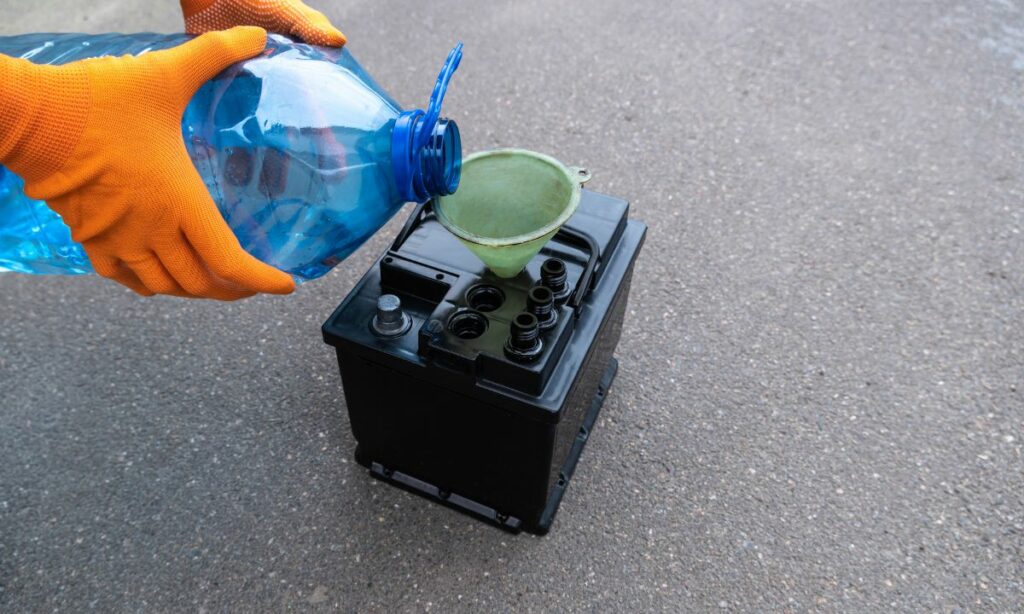
There are maintenance-free lead acid batteries as well.
But the most common ones require maintenance.
Also, these batteries are large and fairly heavy.
On the plus side:
The lead acid battery provides large amounts of current, and voltage, and has a high capacity. Especially when compared to alkaline batteries.
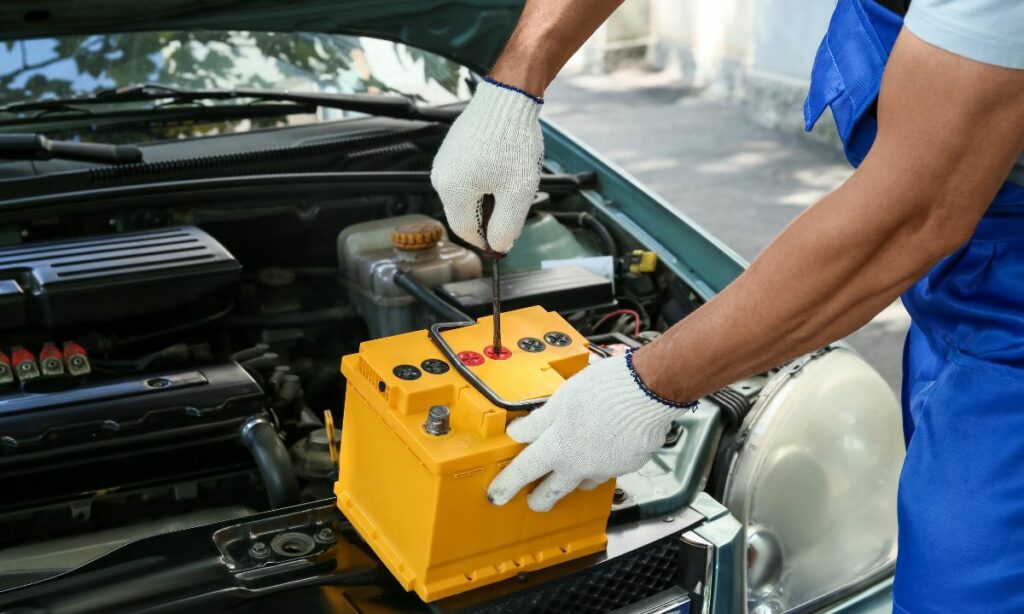
A typical lead acid battery used in a motorcycle has 6 chambers. Each chamber is called a cell generating a voltage of 2V (that’s nominal voltage, the actual will be around 2.1V).
The 6 cells combined give a total nominal voltage of 12V. That’s the typical lead acid battery used in a motorcycle.
The lead acid batteries are also low cost. Operate in a wide temperature range. Easy to recycle.
On the flip side:
Compared to other alternatives here, lead acid batteries still come up short in their capacities.
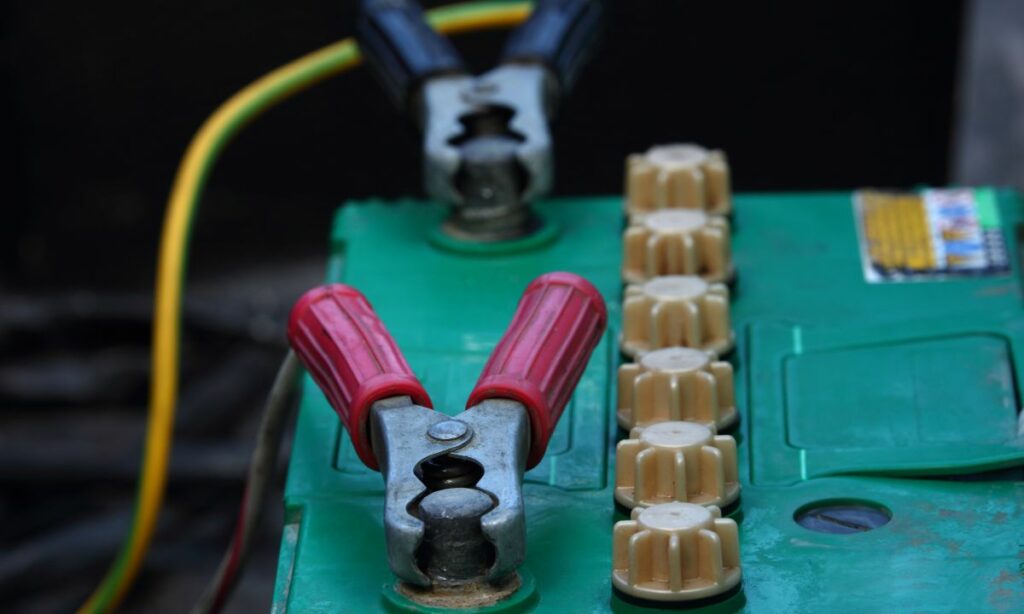
To be precise, the lead-acid battery has low energy density (energy the battery can store per volume).
So, if you need higher capacity, the lead acid battery is going to be huge and heavy.
They also have higher discharge rates. And low life cycles.
Not to mention, they require regular maintenance.
Pros
- Low cost
- Wide operating temperature range
- Easy to recycle
Cons
- High discharge rate
- Low life cycles
- Huge and bulky
- Require regular maintenance
#2. AGM battery
AGM (Absorbed Glass Mat) batteries look identical to conventional lead acid batteries but they are different on the inside.
How?
The AGM batteries have glass mats that absorb all the battery acid. The glass mat holds the battery acid tight and restricts the movement.
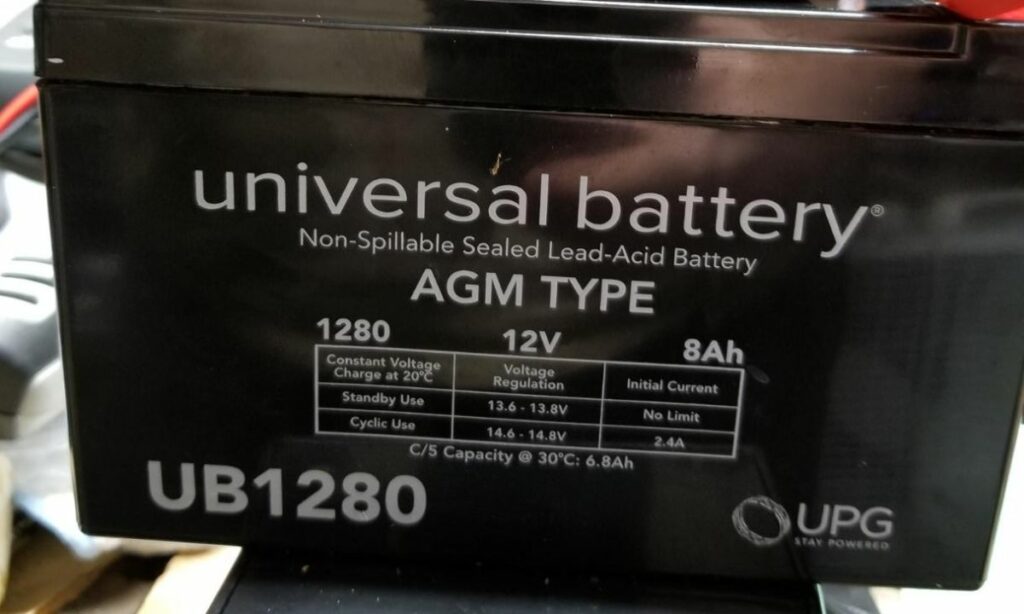
Unlike the lead acid batteries, where the electrolyte is free to move within the casing.
In a way, you can say AGM batteries are an evolved version of lead-acid batteries.
The improvement can be seen in other aspects as well.
AGM batteries pack twice the capacity with the same volume as compared to lead acid batteries.
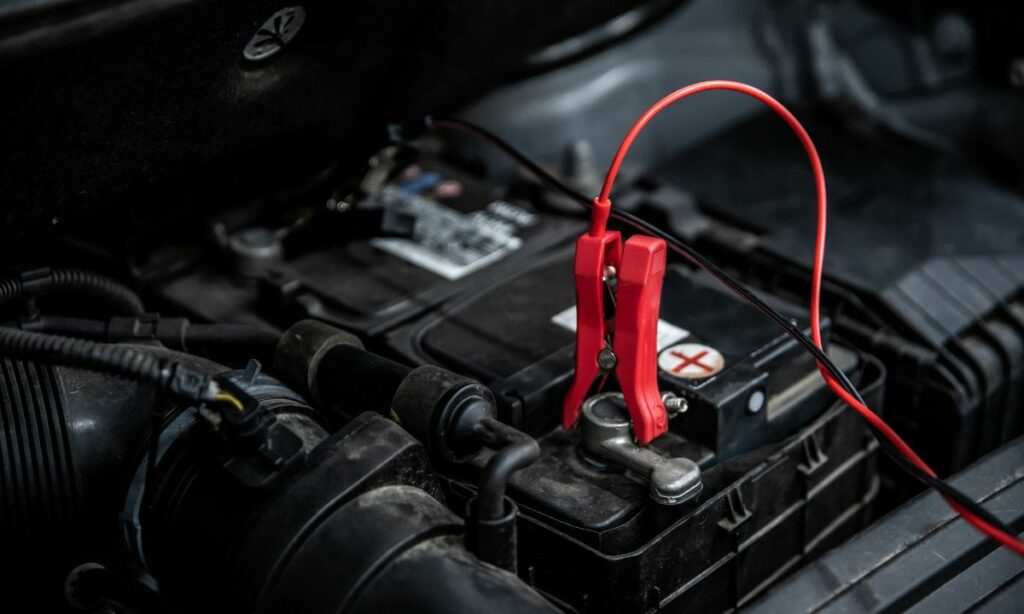
Not just that.
AGM batteries drain slower (low discharge rate). Have higher life cycles. Improved vibration resistance. Improved cold start.
And most of all, no spillage and leaks. Which was a huge problem with lead-acid batteries.
As a result, AGM batteries are widely popular.
They are preferred over lead acid batteries when there are too many appliances and electricals present.
For vehicles loaded with electronics (especially in cars with power windows and doors, GPS navigation, USB ports, infotainment systems, etc., – AGM is any day preferred over a lead acid battery.

All these technological improvements come at a cost though.
AGM batteries are more expensive than lead-acid batteries.
Still, AGM batteries have widespread applications. And are the popular battery choice in motorcycles and cars.
Pros
- No spillage and leakages
- Improved life cycles and vibration resistance
- Lower discharge rate
- Works well in cold temperatures
Cons
- Costlier than lead-acid batteries
- Bulky and heavy weight (lower than lead-acid but still high)
#3. Gel battery
Gel batteries are different in the sense they use a gel electrolyte in them.

The battery working principle remains the same as lead-acid and AGM batteries.
The gel electrolyte is usually sulphuric acid mixed with silica fumes.
The benefit?
The gel makes the battery spillage and leak proof.
In addition, gel batteries also have low discharge rates and good vibration resistance.
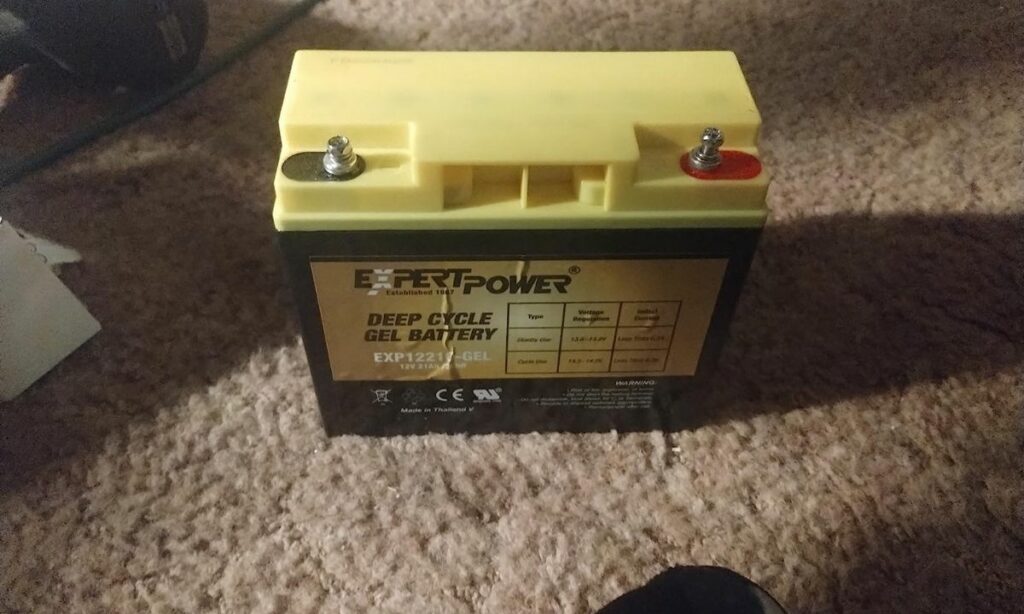
However, gel batteries have lower power density when compared with AGM batteries.
They also take too long to charge. So, slow charging is another drawback.
Another major disadvantage – gel batteries don’t work well in cold temperatures.
All these factors make gel batteries not suitable for vehicles loaded with electronics.
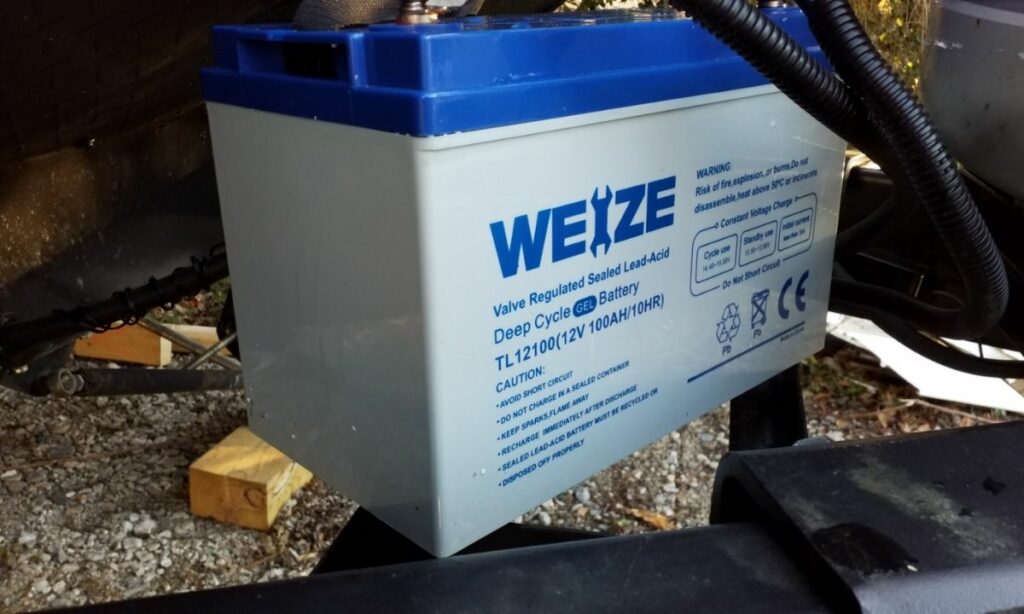
Where they work well is in applications with low current requirements.
Gel batteries are best suited to solar power systems.
For motorcycles, gel batteries are rarely used.
Pros
- Spillage and leak proof
- Low discharge rate
- Good vibration resistance
Cons
- Low power density
- Take too long to charge
- Don’t work well in cold temperatures
#4. Lithium-ion battery
Lithium-ion batteries have a completely different composition altogether than conventional lead acid batteries.
The battery consists of a graphite anode and a metal oxide cathode (usually lithium cobalt oxide, lithium manganese oxide, or lithium iron phosphate).
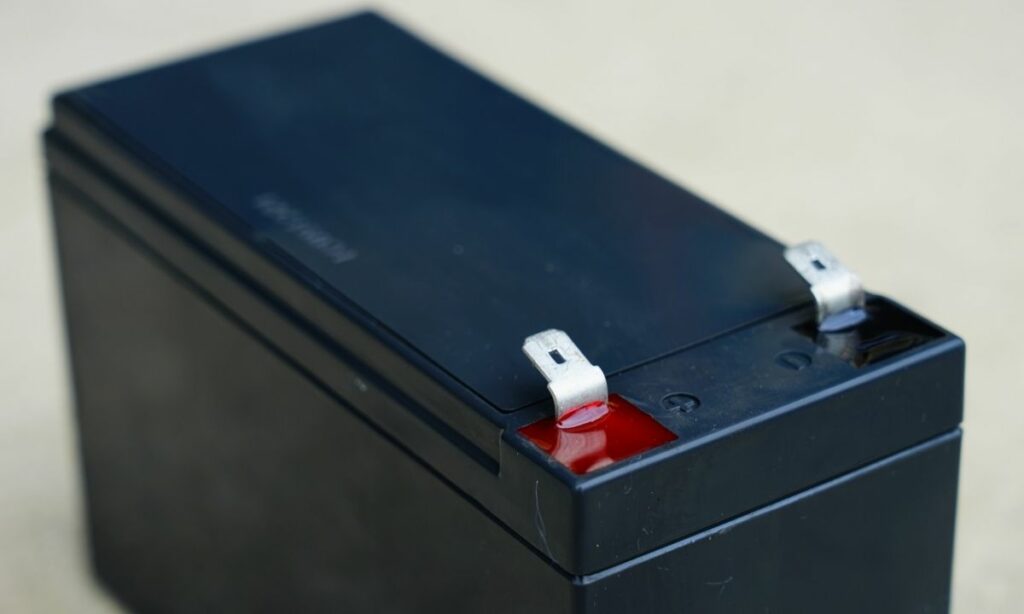
The electrolyte is a lithium salt dissolved in a solvent.
There is also a polymer separator between the two electrodes. The operator is a thin porous membrane made up of polyethylene or polypropylene.
As you can see, the composition is largely different from the above three battery types.
This composition helps Lithium-ion batteries gain high power density and a slow discharge rate.

Low self-discharge is a huge plus.
As time goes on, even without any drawing current, the battery loses its charge.
But lithium-ion batteries don’t lose a lot of charge over time. Their self-discharge is minuscule when compared to lead-acid batteries.
It’s not zero. But it is nowhere near as high as lead acid.
A typical lithium battery loses 1-2% charge per month.
The high power density also makes the lithium-ion battery lighter and low volume.
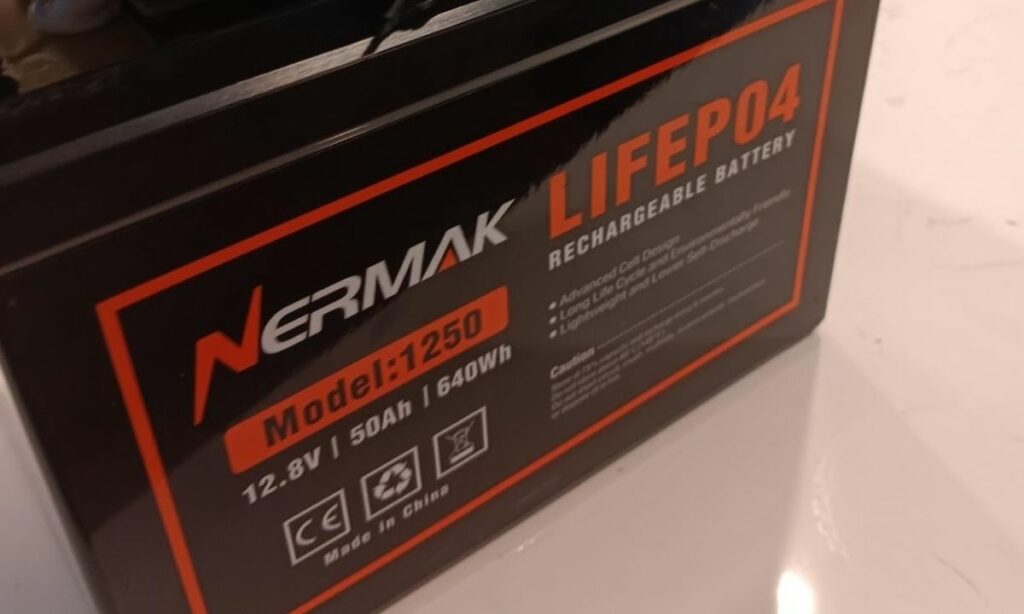
The battery is compact, small in size, and lightweight. Around 1/3rd of the lead acid battery weight.
In addition, lithium-ion batteries have superior performance in cold weather conditions.
Usually, at freezing temperatures, batteries start to underperform. The capacity shrinks as well. But lithium batteries work well in these conditions.
(I don’t completely agree on this point. Personally, I have faced problems with lithium-ion batteries during cold starts. This is not a universal opinion though.)
These batteries are also non-toxic and environment-friendly.
But, not everything about lithium batteries is sunshine and roses though.
Lithium batteries are expensive.
They are usually 2X to 3X the cost of lead-acid batteries
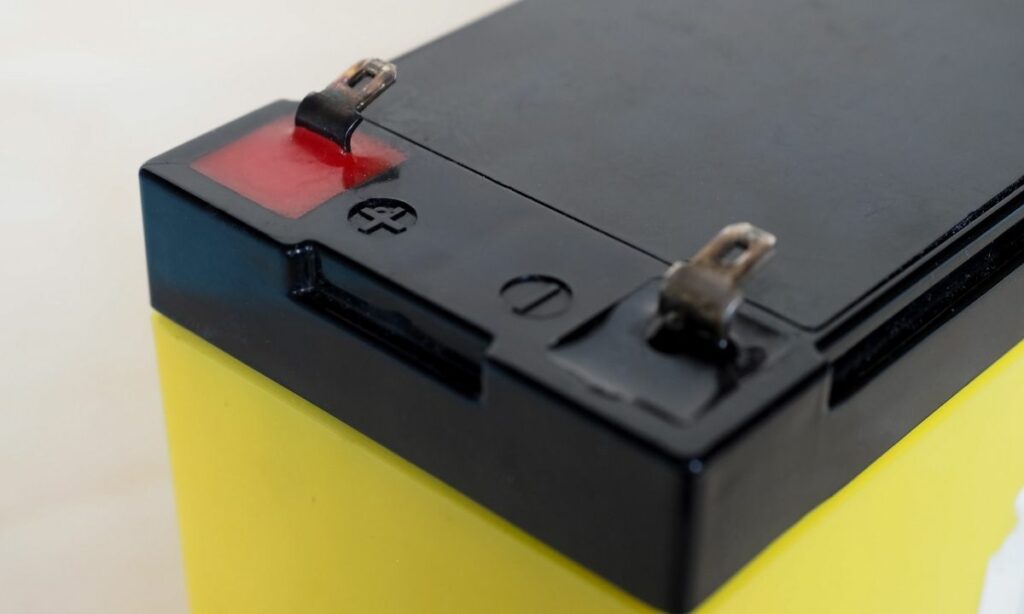
You also need to look for battery chargers. Not all battery chargers can charge lithium batteries. Especially the old ones.
But if you do buy lithium battery chargers, they can charge lead acid and other batteries.
Maybe you just have to upgrade your charger. 😉
Another concern with lithium batteries is deep discharge.
If the voltage drops below a certain threshold (around 10-11V), the battery is dead. There is no bringing it back.
Overall, lithium-ion batteries are the best-performing battery type. But their high cost is still a big hurdle.
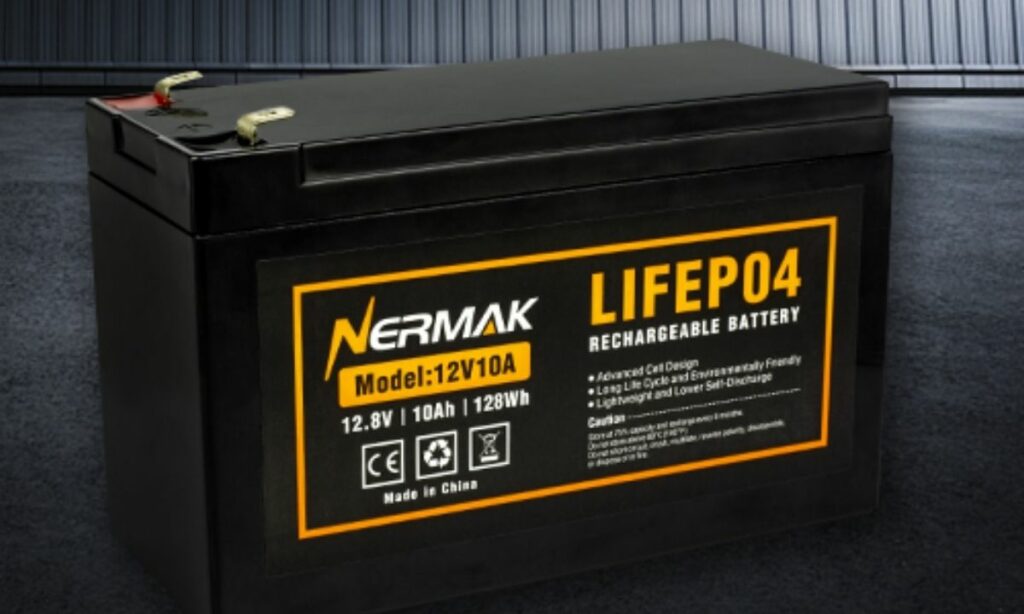
Still, lithium batteries are used in high-performing bikes and racing motorcycles. Their lightweight, compact size and superior performance find them in several applications.
Pros
- Light weight (1/3rd of a lead-acid battery of comparable capacity)
- Compact and small in size
- Slow discharge rate
- High lifespan
Cons
- Expensive
- Not compatible with regular battery chargers, require special battery chargers
Comparing – differences
Here is a comparison table highlighting the differences between each of these battery types:
| Factors | Lead acid | AGM | Gel cell | Lithium-ion |
|---|---|---|---|---|
| Maintenance | Required* | Maintenance-free | Maintenance-free | Maintenance-free |
| Acid leakage | Yes | No | No | No |
| Power density | Low | Medium | Low | High |
| Weight | Heavy | Medium | Medium | Light |
| Life cycles | 200-300 | ~500 | 600-800 | 2000+ |
| Lifespan | 2-3 years | 3-5 years | 3-5 years | ~10 years |
| Discharge rate | 10-15% per month | 3-5% per month | 3-5% per month | 1-2% per month |
| Vibration resistance | Poor | Good | Good | Good |
| Cold temp. performance | Poor | Good | Poor | Good |
| Cost | Low | Medium | Medium | High |
Which battery is the best for motorcycles?
Lithium batteries are the best-performance batteries. But they are expensive as well.
Comparing cost-to-performance, AGM batteries work the best for motorcycles.
As a result:
Most motorcycles use AGM batteries in them. Especially street bikes and standard motorcycles.
High-performance bikes and racing motorcycles typically use lithium-ion batteries.
Before you go…
Here are a few more battery-related posts for you:
